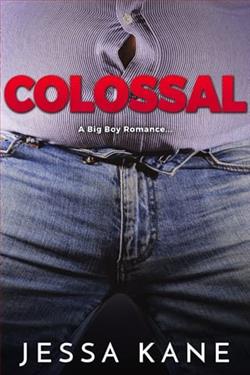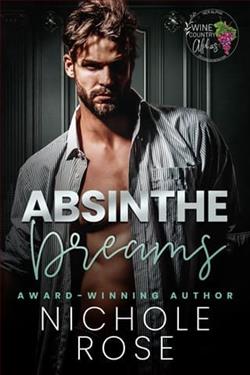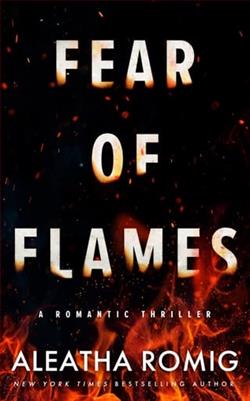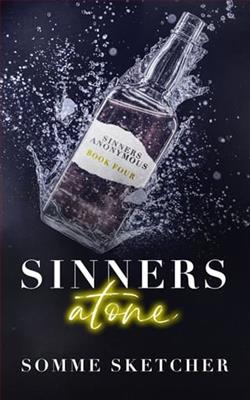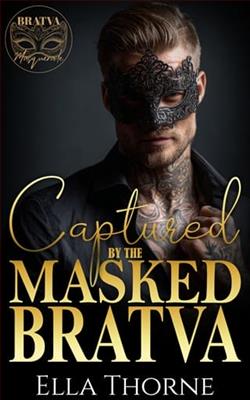Page 11 of The Attic on Queen Street
I opened my mouth to say something but could only wobble my chin. I was busy doing the mental calculations of how many houses I’d need to sell so that we could still put food on the table without selling a single ruby. “Well, then, I guess I’d better get back to work. It’s been a pleasure meeting you, Beau. I’ll be sure to have a chat with my father. I don’t think the work is going to be as extensive as you might think....”
“Oh, trust me, ma’am. I’ve gone over every inch of the entire fence and there’s a lot of damage. I’m thinking it would be best to replace the whole thing.”
Nola slung her backpack over her shoulder. “I hope he knows more about iron fencing than he knows about antiques.” She said this almost under her breath and directed at me, but loudly enough for everyone to hear.
Beau gave her a patient smile. “Actually, my family has owned an antiques store on Royal Street in New Orleans for almost a century—it’s pretty famous in the antiques world. We have a fully restored 1910 Muller carousel horse in the window, the last one of its kind in existence, and people come from all over just to see it. I took my first steps by pulling up on a Georgian breakfront full of Sèvres porcelain and toddling over to a hand-carved Victorian birdcage without breaking anything.”
“How cute,” Nola said, her tone saying otherwise. “I’ve never been to New Orleans, so I wouldn’t know.”
He frowned. “Funny—because people refer to New Orleans as ‘NOLA.’ I thought maybe you had a connection.”
“Oh, I do,” she said, a slow grin spreading on her face.
I gave her a look that told her she should stop there, but she pretended not to notice.
“My real name is Emmaline Amelia, but my mom called me Nola because that’s where I was conceived, in a cheap hotel room in the French Quarter.” She turned to Sophie. “By the way, I found something in my room yesterday. We think maybe Meghan Black found it in the cistern, but I haven’t seen her, so I’m just guessing. Do you have a minute to take a look?”
“Sure—would love to,” Sophie said, lowering eyebrows that had risen to meet her hairline as Nola spoke.
Nola dropped her backpack and rushed from the room as I called after her, “Hurry! I’m sure Mrs.Ravenel will be here soon.
“I love her like a daughter, but I’m her stepmother,” I said to Beau, hoping to clarify that I hadn’t conceived anyone in a cheap hotel room in New Orleans.
“Yes, ma’am. I understand.”
I gritted my teeth at the “ma’am” thing, but I let it pass. There was something endearing and sincere about his smile, and I wondered if Nola had noticed that, too.
I heard the hall chest drawer slam shut, and a moment later, Nola hurried back into the kitchen, clutching the small iron coffin. She placed it on the kitchen table in front of Sophie.
“It’s a Frozen Charlotte,” Beau said immediately, looking over Sophie’s shoulder. “What does it say on the top?”
“ ‘Listen to your mother,’ ” Nola said. “Obviously designed by a mother.” She rolled her eyes.
“I’ve heard of Frozen Charlottes,” Sophie said. “But I’ve never seen one in person.”
Beau reached down and picked it up. “Does it open?”
Nola nodded, then used her finger to flick open the latch. “It reminds me of that scary clown inIt. Worst movie ever.”
Beau examined the doll without touching it. “Bestmovie ever. Nobody will ever look at a stray red balloon the same way ever again.”
“That doesn’t make it a great movie,” Nola said with disdain. “So, what’s a Frozen Charlotte?”
“They originated during the Victorian era and were called Frozen Charlottes—or Charlies, for male dolls,” Beau said. “They were made in response to a popular song, ‘Fair Charlotte,’ which was based on an earlier poem, ‘A Corpse Going to a Ball.’ ” He grimaced. “It was a cautionary tale for children—especially young ladies—about the dangers of vanity and not listening to your parents. That’s what the words on top of the little coffin are for. The dolls were made of porcelain—which is why this one is still in perfect condition—and very cheap to buy, which added to their popularity. They were even baked into birthday cakes at one point. Not all of them had their own coffins, though, so this one is special.”
“Sounds uplifting and perfect for children,” Nola said.
“Those crazy Victorians.” Beau grinned. “They were also fond of postmortem photographs of loved ones and making jewelry out of a deceased person’s hair.”
“You sure it’s Victorian?” Sophie asked.
“Yeah, definitely,” Beau said, handing her the coffin.
“So it probably didn’t come from the cistern,” I said. “Everything we’ve pulled out of it has been middle to late eighteenth century.”
“But what’s the significance of the buttons?” Sophie asked, reaching inside to pick up a mother-of-pearl button layered with painted tulips.
Beau studied it closely. “You’ve got me on that one. I can call my grandmother—she’ll probably know. She actually has a collection of Frozen Charlottes.”










